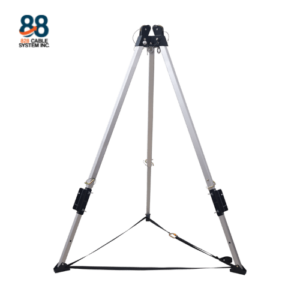Confined spaces are an inherent part of maritime operations, presenting unique challenges and risks for workers. These areas, such as boilers, tanks, and cargo holds on cargo ships, are characterized by limited access, lack of natural ventilation, and potential hazards. In this blog post, we’ll explore the importance of safety measures in confined spaces and discuss essential tips and gear for maritime workers to ensure their well-being.
Understanding Confined Spaces on Cargo Ships
Cargo ships contain various confined areas where workers may need to perform tasks. These spaces include boilers, pressure vessels, cargo holds, void spaces, and tanks for fuel oil or lubricating oil. Due to their design, these areas often lack windows for fresh air circulation and are not intended for continuous occupation.
Risks Associated with Confined Spaces
Working in confined spaces poses significant risks to maritime workers. Limited air supply, exposure to toxic substances, and potential entrapment are among the hazards workers may encounter. Without proper safety measures in place, these risks can lead to accidents, injuries, or even fatalities.
Essential Safety Measures
Preventive measures take precedence over reliance on personal protective equipment (PPE) in confined spaces. Proper management controls and protocols must be established to ensure safe entry and work in these areas. This includes thorough risk assessments, adequate training for workers, and effective communication among team members.
Personal Protective Equipment (PPE)
While preventive measures are crucial, PPE serves as a last line of defense in confined spaces. Respirators, protective clothing, gloves, and safety harnesses are examples of PPE that may be necessary to mitigate risks and ensure worker safety. Employers must provide appropriate PPE based on the specific hazards present in each confined space.
Evaluating Risks and Selecting PPE
Determining the appropriate PPE requires a comprehensive evaluation of the risks and their severity in confined spaces. Factors such as the nature of the environment, potential exposure to hazardous substances, and the likelihood of emergencies must be considered. Conducting a thorough risk assessment enables employers to select the most suitable PPE for their workers.
Recommendations for Workers and Employers
Both workers and employers play crucial roles in ensuring safety in confined spaces. Workers should undergo comprehensive training on confined space entry procedures, hazard recognition, and emergency response. Employers, on the other hand, are responsible for providing a safe work environment, including proper equipment, training, and supervision.
Compliance with Regulations and Standards
Compliance with relevant regulations and standards is essential for maintaining a safe work environment in confined spaces. Occupational Safety and Health Administration (OSHA) regulations, as well as maritime safety standards, provide guidelines for employers to follow. Adhering to these regulations helps prevent accidents and protects the well-being of maritime workers.
Takeaway
Safety should always be a top priority in maritime operations, especially when working in confined spaces. By implementing preventive measures, providing appropriate PPE, and adhering to regulations, employers can create a safer work environment for their workers. Through collaboration and vigilance, we can ensure that maritime workers remain protected while performing their duties in confined spaces.


